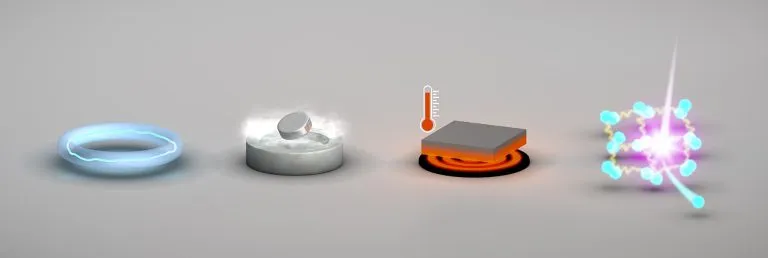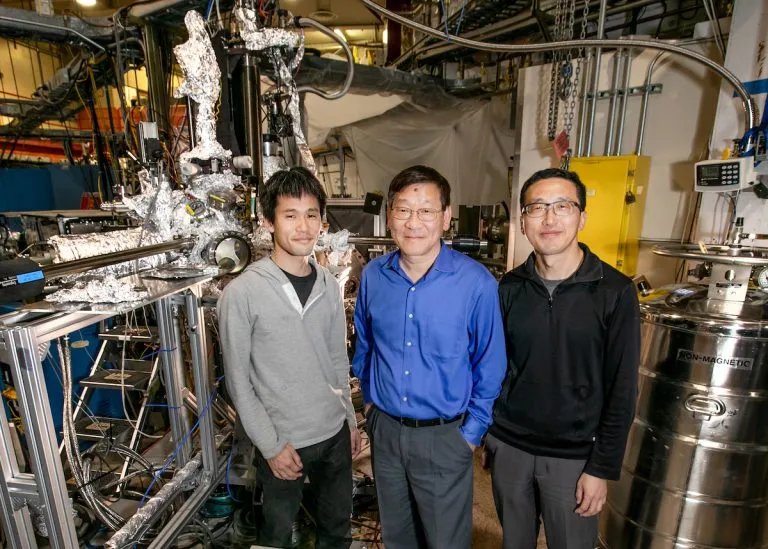35 years ago, when researchers discovered a new and exciting class of superconducting materials, they were ecstatic. These copper oxides or cuprates, like other superconductors, can conduct electricity without resistance or loss when cooled below a specific temperature - but their temperature is much higher than scientists expected. This increases the possibility of allowing them to operate at temperatures close to room temperature for perfectly efficient power lines and other uses.

Research soon confirmed that they showed two other typical characteristics of the transition to superconducting state. The material emits a magnetic field when superconductivity occurs, allowing the magnet placed on a large piece of the material to hover over its surface. During the transition period, its heat capacity - the heat required to raise its temperature by a certain amount - shows obvious abnormalities.
However, despite decades of efforts and the use of various experimental tools, the fourth feature (which can only be seen on the micro scale) is still elusive: when the material changes from the normal state to the superconducting state, electrons pair and condense into an "electron soup".
Now, a research team from the SLAC National Accelerator Laboratory of the U.S. Department of energy and Stanford University has finally revealed this fourth feature through accurate and high-resolution measurements of angle resolved light emission spectroscopy (ARPES), which uses light to emit electrons from materials. The measurement of the energy of these electrons reveals the way of measuring the energy emitted from the material.
Recently published in Nature 》In a paper in the journal, the team confirmed that the cuprate material they studied, called Bi2212, changed to superconducting state in two different steps and at very different temperatures.

"Now that we know in great detail what happens during the superconducting transition, we can consider how to make it happen at higher temperatures," said SUDI Chen, who led the study while a PhD student at Stanford University. "That's a very practical direction."
Professor Shen Zhixun, an investigator at the Institute of materials and Energy Sciences (SiMES) at Stanford University, who supervised the study, said: "This is the culmination of 15 years of scientific exploration trying to understand the electronic structure of these materials. It provides a missing link for the overall picture of unconventional superconductivity. We know that these materials should produce unique spectral characteristics when paired electrons condense into quantum condensates; surprisingly, it took us so long to find it."
Unconventional transition
In the traditional superconductor discovered in 1911, electrons overcome their mutual exclusion and form the so-called Cooper pair. They immediately condense into an electron soup so that the current can run unimpeded.
But in unconventional cuprates, scientists speculate that electrons pair at a certain temperature, but do not condense until they are cooled to a significantly lower temperature; Only then will the material become superconducting.

Although the details of this transformation have been explored by other methods, it has not been confirmed by microscopic probes such as light emission spectroscopy, which studies how substances absorb light and emit electrons. This is an important independent measurement of how electrons in materials behave.
Shen Zhixun began his scientific career at Stanford University. At that time, the discovery of new cup superconductors had just appeared. He had invested more than 30 years as a tool to uncover their secrets and improve the light emission spectrum.
In this study, cup samples made by Japanese collaborators were examined in two ARPES devices - one in Shen Zhixun's Stanford laboratory, equipped with an ultraviolet laser, and the other in SLAC's Stanford synchrotron radiation light source (SSRL), with the help of SLAC staff scientists and long-term collaborators Makoto Hashimoto and Donghui Lu.
"The recent improvement in the overall performance of these instruments is an important factor in obtaining these high-quality results. They enable us to measure the energy of emitted electrons with higher accuracy, stability and consistency," Hashimoto said
"A comprehensive understanding of the physics of HTS is very challenging. Experimenters use different tools to explore different aspects of this difficult problem, which provides deeper insights," Lu added
Shen Zhixun said that the long-term study of these unconventional materials is like peeling layers of skin from onions to reveal the surprising and interesting physics. Now, he said, confirming that the transition to superconductivity takes place in two independent steps, "given us two knobs, we can adjust to make the material superconducting at higher temperatures."
SUDI Chen is now a postdoctoral researcher at the University of California, Berkeley. Researchers from Japan's National Institute of advanced industrial technology, the Lorenz Institute of theoretical physics at Leiden University in the Netherlands and the Lawrence Berkeley National Laboratory of the U.S. Department of energy also contributed to this work, which was funded by the science office of the U.S. Department of energy. SSRL is a user facility of the science office of the U.S. Department of energy.
